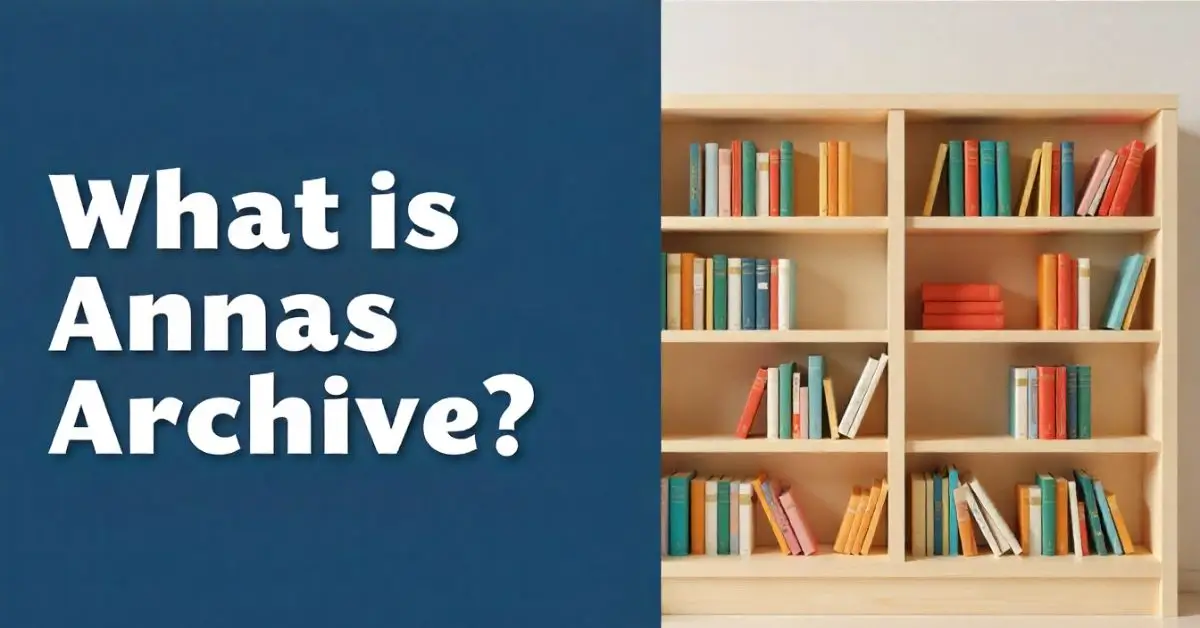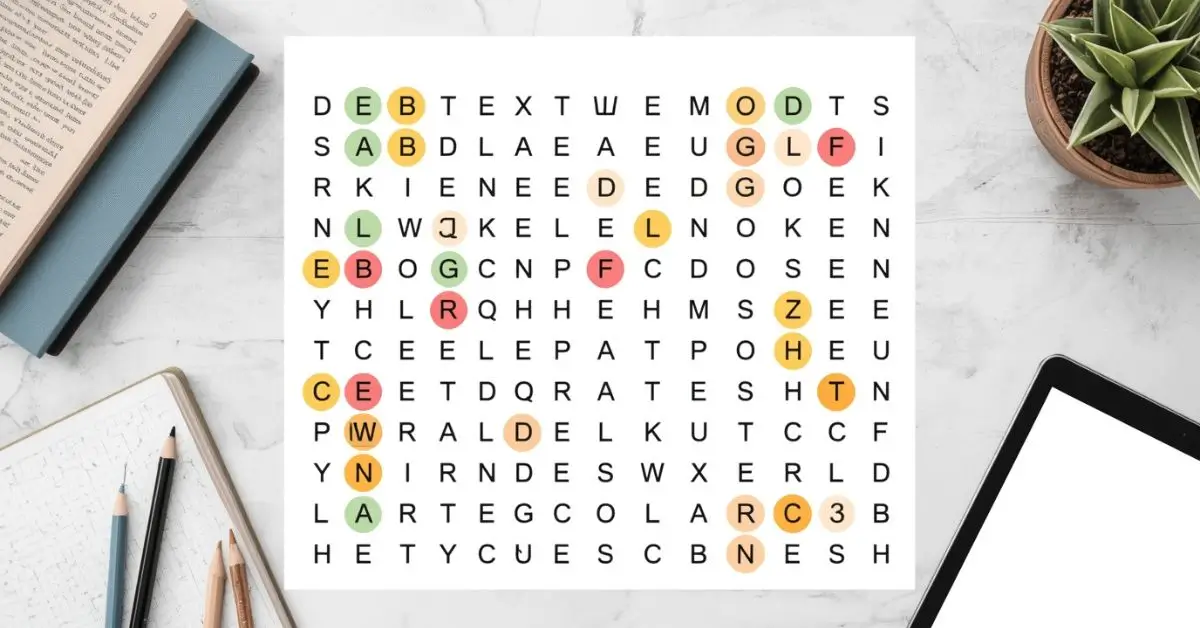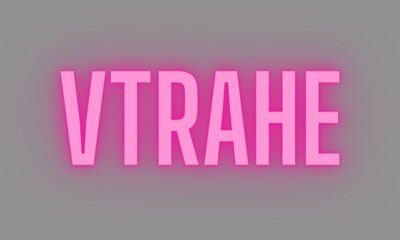Education
The Essential Guide to Writing a Book: A Step-by-Step Blueprint for Aspiring Authors

Writing a book is a dream for many, but it can often feel like a daunting and overwhelming task. From the spark of inspiration to the final draft, the process of writing a book requires dedication, creativity, and perseverance.
Whether you’re an aspiring novelist, a self-help guru, or a business professional with expertise to share, the path to completing your manuscript is a journey worth embarking on. In this article, we’ll break down the process of how to write a book into manageable steps, ensuring you have a roadmap for success.
1. Find Your Purpose and Genre
The first step in writing a book is determining why you want to write and what kind of book you want to create. Is it to entertain? Educate? Inspire? Your purpose will guide you throughout the entire process and keep you motivated.
- Non-fiction: If you’re writing a non-fiction book, consider the subject you’re most passionate about or have expertise in. Do you have valuable knowledge to share, such as life lessons, self-improvement strategies, or industry insights? Identify the target audience who would benefit from your message.
- Fiction: If fiction is your genre, think about the world and characters you want to bring to life. Whether it’s a fantasy epic, a mystery novel, or a contemporary drama, your story’s core idea should resonate with you emotionally.
Once you’ve identified the genre and purpose of your book, it’s important to do some market research. What books are similar to yours? What can you learn from them, and how can your book stand out?
2. Create a Book Outline
An outline is a powerful tool that helps you organize your thoughts, structure your book, and ensure your content flows logically. It’s not set in stone—many writers adjust their outlines as they go—but it serves as a solid framework.
- Fiction: If you’re writing fiction, outline the major plot points, character arcs, and key settings. Decide on the beginning, middle, and end of the story, and how the conflicts will unfold.
- Non-fiction: For non-fiction, break your book down into chapters, each covering a specific theme or topic. Include a clear introduction and conclusion. Map out the key points you want to convey and the order in which they should appear.
Don’t worry about getting every detail right at first—focus on the broad strokes, and refine as you go. An outline serves as your roadmap, but it’s okay to take detours along the way as inspiration strikes.
3. Set Realistic Writing Goals
One of the biggest hurdles in writing a book is simply starting. To overcome this, it helps to set achievable writing goals that break the process down into smaller tasks. Setting goals not only makes writing more manageable, but it also helps track progress and stay motivated.
- Word count goals: Many authors set daily or weekly word count goals. For instance, writing 500 words a day means you’ll have 15,000 words in a month. If your book is 60,000 words, that’s a solid start.
- Time-based goals: Alternatively, you could aim to write for a certain amount of time each day—say, 1-2 hours. This allows you to get into a routine, and over time, the word count adds up.
- Milestones: Celebrate milestones along the way, such as finishing the first chapter or completing the outline. These moments can help maintain momentum when you feel stuck or discouraged.
4. Write Your First Draft
The most important part of writing a book is, of course, writing. The first draft doesn’t need to be perfect—allow yourself to write freely without worrying about grammar, structure, or style. The goal is to get your ideas on paper, and you can refine them later.
- Freewriting: If you’re stuck or unsure of where to begin, try freewriting. Set a timer for 20 minutes and write non-stop about your book’s theme, characters, or main points. This can help break through writer’s block and get your creativity flowing.
- Consistency is key: Try to write at the same time every day, or set aside specific blocks of time. The more consistent you are, the more progress you’ll make.
It’s normal to feel like your first draft isn’t great. In fact, most first drafts aren’t perfect. The key is to keep going and not let imperfections hold you back. You can always revise later.
5. Revise and Edit Your Manuscript
After completing the first draft, the next step is revision. This is when you refine your writing, improve structure, and ensure your message is clear and compelling.
- Big-picture edits: Start by focusing on the major aspects of your book. Does the plot make sense? Are your characters well-developed? Is the book’s structure logical and smooth? For non-fiction, make sure your points are organized in a way that’s easy to follow.
- Fine-tuning: Once the bigger issues are resolved, work on smaller details like sentence structure, word choice, and grammar. Reading your work aloud can help you identify awkward phrasing or repetition.
- Beta readers and feedback: Once you’re happy with your manuscript, it can be beneficial to have others read it. Beta readers—people who read your book before it’s published—can provide valuable insights and help you spot any gaps or areas that need improvement.
6. Polish Your Manuscript
Editing is a separate phase from revision, and it’s just as crucial. Here, you’ll focus on polishing your manuscript to perfection. Grammar, punctuation, style, and formatting should all be thoroughly checked.
- Self-editing: Use tools like Grammarly or Hemingway to catch grammar and spelling errors. It’s also helpful to read your work backward, sentence by sentence, to spot mistakes.
- Professional editing: Consider hiring a professional editor to help refine your work. They can provide an objective, expert perspective on your writing, helping you eliminate inconsistencies, improve clarity, and enhance flow.
7. Publish Your Book
Once your manuscript is polished and ready, you can move toward publishing. There are two main routes:
- Traditional publishing: This involves submitting your manuscript to literary agents or publishing houses. If accepted, they will handle the publishing process, including editing, marketing, and distribution. However, this process can be time-consuming and competitive.
- Self-publishing: Many authors are opting for self-publishing, where you take control of the entire process. You can use platforms like Amazon Kindle Direct Publishing or IngramSpark to publish and distribute your book. While self-publishing offers more control, it also requires more effort in terms of marketing and promotion.
8. Promote and Market Your Book
Once your book is published, the work isn’t over. Marketing and promotion are key to reaching your audience and building your readership.
- Build an online presence: Create a website, blog, or social media profiles where you can connect with readers, share updates, and build your brand.
- Leverage book reviews: Reach out to book reviewers, bloggers, and influencers to review your book. Positive reviews can boost your credibility and attract more readers.
- Participate in book events: Consider joining book fairs, signing events, or speaking engagements to promote your work and connect with fans.
Conclusion
Writing a book is a long and challenging process, but it is also incredibly rewarding. With a clear outline, consistent writing goals, and diligent revision, anyone can bring their ideas to life in the form of a book. Remember that persistence is key—keep writing, stay focused, and celebrate each milestone. Whether you’re writing for yourself or for others, the process of creating a book is a journey that is worth every moment.
Education
What Is Anas Archive and How Does It Work?

Anas Archive is a massive digital repository that provides access to a vast collection of books, research papers, academic materials, and digital documents. It has become a notable platform for individuals seeking open access to knowledge and literature in multiple disciplines. In recent years, it has drawn attention from students, researchers, and digital archivists for its efficiency and simplicity.
Quick Answer
Anas Archive is an online digital library that collects, indexes, and provides access to millions of books and scholarly works for educational and preservation purposes. It functions as a user-friendly search and archive platform emphasizing open knowledge and accessibility.
Understanding the Purpose of Anas Archive
The main goal of Anas Archive is to make information easily accessible to everyone. It functions as a central hub where users can discover digitized books, academic journals, and technical documents. Whether you’re a university researcher or a curious learner, this platform enables you to explore academic material that might otherwise be behind paywalls.
Experts in digital preservation have praised platforms like this for democratizing knowledge. According to several information science professionals, “open access archives foster education and innovation by making knowledge universally available.” This belief is central to the philosophy behind Anas Archive.
The Origins and Growth of Anas Archive
The project behind Anas Archive began as an independent initiative. It aimed to organize and preserve digital content for educational and historical purposes. Over time, the database grew significantly, fueled by community contributions and digital sharing networks.
By creating a user-friendly and searchable interface, the archive managed to stand out from similar repositories. The expansion of categories—from literature and philosophy to computer science and engineering—helped it attract global users. Today, it’s recognized as one of the largest and most comprehensive open digital archives.
How Anas Archive Works
Anas Archive operates using a sophisticated indexing system. It scans and organizes data from multiple sources, ensuring quick and accurate results. When a user searches for a book or paper, the system retrieves relevant matches from its indexed database.
This efficiency is achieved through metadata tagging, categorization, and automated scanning algorithms. Each item is labeled with details such as title, author, publication year, and file format. The structured metadata allows easy filtering and precise results, making research faster and more convenient.
Moreover, the archive is optimized for different devices, allowing users to explore its database through computers, tablets, or smartphones—making learning accessible anywhere.
Key Features of Anas Archive
1. Extensive Collection
Anas Archive hosts millions of files spanning science, technology, arts, literature, and humanities. Its variety appeals to both casual readers and academic researchers.
2. Search Efficiency
The advanced search system ensures users can locate books, articles, and papers within seconds. Filters for language, publication date, and author improve usability.
3. Community Contribution
Users often upload new resources, ensuring the platform remains updated and diverse. This collaborative nature has helped the archive grow exponentially.
4. Educational Focus
The platform prioritizes learning and knowledge-sharing. It supports researchers, educators, and students by providing free or easily accessible material.
5. Global Accessibility
With multilingual content and a simple interface, the archive serves users from all over the world, regardless of their academic background or technical skills.
Comparison Table: Anas Archive vs. Other Digital Archives
| Feature | Anas Archive | Open Library | Project Gutenberg | Sci-Hub | Internet Archive |
|---|---|---|---|---|---|
| Cost | Free | Free | Free | Free | Free |
| Ease of Use | Very Easy | Moderate | Easy | Complex | Easy |
| Search Efficiency | Excellent | Good | Fair | High | Good |
| File Variety | Extensive (Books, Papers, PDFs) | Limited to Books | Limited to Books | Research Papers Only | Mixed Content |
| Accessibility | Global Access, Multilingual | English-focused | English | Academic Access | Global |
| Performance | Fast Indexing and Results | Moderate | Moderate | High | Variable |
| Community Support | Strong | Medium | Low | Medium | Strong |
This comparison shows that Anas Archive provides a balanced experience—combining the vastness of the Internet Archive with the precision of research databases.
Benefits of Using Anas Archive
The advantages of Anas Archive go beyond convenience. Here are several ways it benefits users:
- Unlimited Access: No subscription or membership fees are required.
- User-Friendly Interface: Easy navigation helps all age groups.
- Educational Empowerment: Students and teachers gain access to essential material without restrictions.
- Preservation of Knowledge: Ensures old and rare texts remain accessible digitally.
- Open Sharing: Promotes collaborative learning through global contributions.
According to educational technology analysts, archives like these help “bridge the gap between digital accessibility and traditional education systems,” allowing self-learners to thrive in modern times.
Ethical and Legal Aspects
While Anas Archive supports open access, it also faces ethical considerations related to copyright and content ownership. The platform’s intention is educational preservation and research support, not commercial distribution. It relies on community ethics to maintain a respectful sharing environment.
Digital archivists recommend verifying copyright status before downloading or using materials for commercial purposes. Responsible usage ensures sustainability and credibility for the archive’s mission.
The Technology Behind Anas Archive
The underlying technology of Anas Archive combines search algorithms, machine learning, and structured data indexing. The system continually refines search accuracy using user interaction patterns.
Data Indexing
Metadata such as title, author, tags, and subject are processed for rapid access.
AI Enhancement
Machine learning improves recommendations and related search results.
Data Security
The archive employs encryption and redundancy to maintain data integrity and avoid loss.
These features align with modern data management standards, ensuring both efficiency and safety.
Why Anas Archive Stands Out
Unlike other digital repositories, Anas Archive emphasizes inclusivity and academic diversity. Its catalog covers multiple languages, niche subjects, and interdisciplinary topics. The platform’s adaptability also allows integration with modern reading devices and digital study tools.
Educators have highlighted that “the archive bridges gaps between formal education and independent learning.” This universality explains its popularity among researchers, students, and general readers alike.
User Experience and Design
The interface of Anas Archive is minimalist, clean, and fast-loading. Designed for simplicity, it allows even non-technical users to find and access content easily. Features like dark mode, language filters, and adaptive layouts make browsing enjoyable and efficient.
Its lightweight structure enhances performance across mobile and desktop devices. This responsiveness is essential in an era where mobile usage dominates online activity.
The Role of Anas Archive in Modern Education
Education experts believe platforms like Anas Archive play a major role in equalizing global learning opportunities. By removing barriers like expensive textbooks or limited library access, students from underprivileged backgrounds can still access high-quality resources.
As one digital learning researcher notes, “Access to knowledge should never depend on one’s geography or income.” Anas Archive embodies this principle, offering digital inclusivity and academic empowerment.
Preservation and Long-Term Impact
Archival sustainability is a growing challenge. Anas Archive contributes to long-term preservation by hosting digital backups of rare and scholarly texts. Through redundancy and community mirrors, it reduces the risk of losing important historical or scientific documents.
Preserving information ensures that future generations can continue studying and referencing past works. This approach aligns with international digital preservation standards set by libraries and educational consortia.
Challenges Faced by Anas Archive
Even with its success, Anas Archive faces several challenges:
- Copyright Issues: Some materials may raise ownership disputes.
- Data Storage Costs: Hosting vast amounts of data requires continuous technical resources.
- Verification of Content: Ensuring academic authenticity can be complex.
- Regulatory Scrutiny: Digital archives often face legal and policy oversight.
Addressing these issues transparently helps maintain user trust and sustainability.
Future of Digital Archives Like Anas Archive
The future of Anas Archive looks promising as demand for open knowledge grows. With AI-driven indexing, blockchain-based verification, and enhanced security measures, such platforms could revolutionize global education systems.
Emerging technologies may allow deeper personalization, letting users receive reading suggestions tailored to their field or interests. Future versions might also introduce annotation tools and community discussions, further improving learning engagement.
EXPERT ANSWERS
1. What is Anas Archive used for?
It’s primarily used to access, preserve, and share academic and educational digital content.
2. Is Anas Archive legal?
It depends on the jurisdiction and content type. The platform encourages ethical and educational use of materials.
3. How can I use Anas Archive safely?
Stick to public domain or open-access works and respect copyright laws.
4. Is Anas Archive free to use?
Yes, it is free and open to the public for educational purposes.
5. How reliable is the data on Anas Archive?
Its content is community-driven but widely respected for accessibility and comprehensiveness.
Expert Opinions on Digital Archives
Experts from various digital libraries agree that platforms like Anas Archive promote lifelong learning. As stated by an academic digital archivist, “Open archives transform education by enabling unrestricted exploration of knowledge.”
According to another data management professional, “Digital preservation ensures that human progress, documented over centuries, remains accessible to all.” Anas Archive fulfills this mission by preserving literature, research, and cultural documentation.
Security and Privacy in Anas Archive
Security remains a top priority for any archive. Anas Archive employs encryption, secure mirrors, and minimal data collection policies. This approach aligns with standard data protection guidelines and ensures user privacy while accessing materials.
Users should, however, always maintain safe browsing practices, including the use of secure connections and verified file sources.
Community and Collaboration
Community participation forms the foundation of Anas Archive. Users contribute by suggesting titles, uploading files, and reporting errors. This collective effort builds a more accurate and reliable database.
The collaborative approach reflects the open-source philosophy—empowering people to share, learn, and build together.
Real-World Impact of Anas Archive
In developing regions, where physical libraries are limited, Anas Archive acts as a gateway to global education. Many educators report improved student engagement when free digital materials are available. Similarly, independent learners gain confidence when they have access to quality resources.
By bridging access gaps, Anas Archive supports both formal education systems and informal learning pathways.
The Philosophy Behind Anas Archive
At its heart, Anas Archive promotes the philosophy of open knowledge—the idea that learning should be universally accessible. This belief aligns with global educational values emphasizing equality and transparency in information sharing.
Through collaboration and responsible digital use, archives like this can shape a more informed and connected world.
Conclusion:
Anas Archive stands as a modern symbol of open access, knowledge preservation, and digital empowerment. It continues to reshape how people learn and share information worldwide. By offering a free and organized space for education, it eliminates traditional barriers to knowledge.
As technology evolves, so will archives like this—further enhancing accessibility, accuracy, and collaboration. Ultimately, Anas Archive reflects humanity’s ongoing effort to preserve learning for the next generation.
FAQ’s
1. What kind of materials can I find on Anas Archive?
You can find books, academic papers, research journals, and technical documents across multiple disciplines.
2. Does Anas Archive charge users?
No, it’s entirely free for public use and educational exploration.
3. Is the platform safe for students?
Yes, it’s generally safe and encourages responsible academic use.
4. How often is the content updated?
Regularly, as users and contributors continuously add new files and resources.
5. Can I contribute my own material?
Yes, community contributions are encouraged to expand and diversify the archive.
6. What makes Anas Archive unique?
Its combination of accessibility, search efficiency, and educational value distinguishes it from other archives.
Education
What Is Annas Archives and Why Does It Matter in 2025?

Annas Archives has become one of the most discussed digital libraries in recent years. Designed as a global index of free academic and literary resources, it serves millions of readers, students, and researchers seeking open access to knowledge. In this guide, we’ll explore what Annas Archive is, how it operates, its benefits and controversies, and why it continues to shape digital archiving in 2025.
Quick Answer
Annas Archives is a free, open-source project that indexes data from major shadow libraries like Library Genesis and Sci-Hub. It allows users to search for books, research papers, and documents globally. Its goal is to preserve human knowledge and ensure long-term access to information.
Introduction: A Revolution in Digital Preservation
In an era dominated by paywalls and subscription-based platforms, Annas Archives stands as a defiant yet visionary project. It aims to preserve and make accessible the world’s accumulated knowledge, regardless of economic or political barriers. Founded by anonymous digital archivists, the platform collects and mirrors data from various open sources, ensuring that even if one source disappears, the knowledge remains safe.
According to several open-access advocates, digital preservation has never been more critical. Universities and institutions often lock valuable content behind paywalls, limiting access to only those who can afford it. Annas Archive challenges that by maintaining a decentralized repository that anyone can search.
Understanding the Core Concept Behind Annas Archives
At its core, Annas Archive functions as a meta-search engine for books, research articles, and digital documents. Rather than hosting files directly, it indexes multiple databases and archives. This means users can search across several sources at once, simplifying access to academic and literary materials.
The idea mirrors what the Internet Archive once did for websites and cultural media. However, Annas Archive extends its reach to cover books, papers, magazines, and even scientific data. The project emphasizes redundancy — ensuring that no single point of failure can erase large sections of humanity’s knowledge base.
Key Goals of Annas Archives
- Universal Access – Making academic and cultural works freely available.
- Long-Term Preservation – Ensuring that data remains available even if original sources vanish.
- Transparency – Keeping the entire codebase open source for verification and contribution.
- Decentralization – Avoiding dependency on centralized systems or single domains.
How Annas Archives Works: The Technology and Structure
Technically, Annas Archive is built on a combination of data scraping, mirroring, and distributed hosting. It does not store copyrighted material directly. Instead, it serves as a bridge — connecting users to open repositories.
The platform integrates multiple databases such as:
- Library Genesis (LibGen) – Academic and fiction books.
- Sci-Hub mirrors – Research papers and journals.
- Z-Library – General literature and textbooks.
- Open directories – Publicly available metadata archives.
By merging these sources, Annas Archive provides a unified search interface. Users can search by author, title, ISBN, or DOI — similar to professional research databases.
“Our mission is to preserve knowledge for future generations. We believe access to information should not depend on geography or wealth,” says an anonymous contributor from the Annas Archive team.
Why Annas Archives Became So Popular
The popularity of Annas Archive can be attributed to a few key factors — accessibility, transparency, and a sense of digital resistance.
For many, the site represents a democratization of education. Students in developing countries often lack access to expensive journals and books. Through Annas Archive, they can explore materials freely. Additionally, the open-source nature builds trust — anyone can audit or mirror the platform.
Social media platforms like Reddit and X (formerly Twitter) have also amplified its presence. Scholars share links, educators recommend it for research, and readers discuss rare book discoveries.
Major Advantages
- Free access to millions of books and papers.
- Cross-platform search through multiple archives.
- Permanent backups to prevent data loss.
- Community-driven development and maintenance.
- Ethical debates that inspire awareness of access inequality.
Ethical and Legal Considerations
While Annas Archive operates under the banner of open knowledge, it also walks a fine ethical line. Critics argue that hosting or linking copyrighted materials without consent violates intellectual property laws. Supporters counter that it’s a moral duty to preserve and share knowledge that otherwise remains locked behind corporate barriers.
Digital ethics experts like Dr. Elena Harris note that,
“Projects like Annas Archive force us to question the balance between intellectual property rights and the human right to information.”
In response, Annas Archive’s team emphasizes transparency — it does not host files but rather catalogs metadata and existing mirrors. This approach attempts to reduce legal exposure while maximizing accessibility.
Annas Archives vs Other Knowledge Repositories
Let’s see how Annas Archive compares with traditional and alternative repositories in 2025.
| Feature | Annas Archive | Internet Archive | Google Books | ResearchGate | Sci-Hub |
|---|---|---|---|---|---|
| Cost | Free | Free | Limited free access | Free (with signup) | Free |
| Ease of Use | Moderate | Easy | High | Medium | Medium |
| Content Type | Books, papers, metadata | Web, books, media | Books & snippets | Research papers | Research papers |
| Accessibility | Global mirrors | Centralized servers | Region-restricted | Member-based | Variable |
| Performance | Fast (depends on mirrors) | Moderate | High | Moderate | Fast |
This table highlights that while Annas Archive isn’t always the most polished, it’s among the most comprehensive and resilient. Its decentralized structure gives it an edge in long-term survival.
The Cultural Impact of Annas Archives
Beyond the technical aspects, Annas Archive represents a broader cultural movement — one advocating for open knowledge and digital equality. The project has inspired conversations across academia, journalism, and even policy circles.
For students and researchers in countries with limited access to paid journals, it acts as a lifeline. It’s not just about free books — it’s about bridging educational gaps globally. By mirroring knowledge, it creates resilience against censorship, data loss, and monopolization.
Experts compare its impact to the early open-source software movement, where communities collectively built resources that benefited humanity without profit motives.
How to Use Annas Archive Safely and Effectively
While using Annas Archive is relatively simple, understanding safe access practices is crucial.
Step-by-Step Guide
- Search by ISBN or Title: Enter the exact title or code in the search bar.
- Check Metadata: Verify edition, author, and year to ensure accuracy.
- Use Trusted Mirrors: Access through secure mirror links to avoid fake sites.
- Download Responsibly: Prefer public-domain or open-license materials.
- Verify Integrity: Cross-check files using digital hashes when possible.
Tips for Efficient Use
- Bookmark reliable mirrors and metadata sources.
- Combine searches with Google Scholar for academic precision.
- Use a VPN if your region restricts access to open archives.
These steps ensure both accessibility and safety, aligning with responsible digital archiving practices.
The Role of Open Source in Annas Archive’s Development
Open source plays a vital role in maintaining Annas Archive’s credibility. Its codebase is publicly available, allowing developers to contribute improvements, fix bugs, and verify data integrity.
The project’s transparency has attracted contributions from digital archivists, software engineers, and even librarians. Open collaboration helps sustain and scale the project — ensuring it’s not dependent on a single entity.
“Transparency breeds trust. Open data projects like Annas Archive thrive because the community ensures their survival,” notes digital historian Michael Dean.
The Controversy and Censorship Battles
Annas Archive has faced numerous takedowns, domain seizures, and blocking attempts from governments and copyright agencies. Each time, it reemerges through new mirrors and decentralized networks.
These constant battles illustrate the tension between information freedom and intellectual property control. For many advocates, the persistence of Annas Archive symbolizes the unstoppable nature of knowledge sharing in the digital age.
Despite controversies, the site’s community remains committed to its preservation mission, often viewing these challenges as proof of its necessity.
EXPERT ANSWERS
1. Is Annas Archive legal to use?
Annas Archive operates in a legal gray area. It doesn’t host copyrighted files directly but indexes data from third-party sources. Legality depends on your region and how you use the platform.
2. Is Annas Archive safe?
Yes, when accessed via official mirrors or reputable domains. Users should avoid downloading from unknown or suspicious links.
3. What type of books are available on Annas Archive?
It includes textbooks, academic papers, research journals, fiction, and reference works sourced from open or mirrored databases.
4. Why was Annas Archive created?
It was created to preserve digital knowledge, inspired by earlier projects like Library Genesis and Sci-Hub, aiming to provide permanent access to global information.
5. Who runs Annas Archive?
The project is maintained by an anonymous team of open-access activists and volunteer developers dedicated to digital preservation.
The Broader Movement: Knowledge Without Borders
Annas Archive is part of a larger knowledge liberation movement, alongside efforts like Project Gutenberg, the Internet Archive, and Wikipedia. Together, these projects promote decentralized, community-driven access to education and culture.
While critics argue about legality, supporters highlight the moral argument: information should serve humanity, not be confined by profit barriers. The real value lies not in ownership but in preservation and dissemination.
The Future of Annas Archive and Digital Libraries
Looking ahead, Annas Archive may evolve into something far greater than a simple index. Developers are exploring ways to integrate blockchain-based archiving, decentralized file storage (like IPFS), and AI-driven metadata cleaning.
These innovations could make data preservation permanent, tamper-proof, and universally searchable — the ultimate goal of the digital preservation community.
As universities and governments increasingly digitize their archives, open projects like Annas Archive remind us of the need for public oversight and free access to humanity’s collective memory.
Expert Insight: The Balance Between Rights and Access
The debate surrounding Annas Archive reflects a long-standing tension. According to intellectual property researcher Dr. Naomi Clarke,
“We must rethink access laws for the digital age. Restricting knowledge is no longer practical — it’s counterproductive to innovation.”
Her statement captures the essence of why Annas Archive resonates with millions. It’s not about rebellion; it’s about adaptation — adjusting old laws to new realities.
Annas Archive and Educational Equity
From an educational perspective, Annas Archive offers unprecedented opportunities. In many developing nations, students depend on such resources for their academic survival. The archive levels the playing field — enabling anyone with an internet connection to access world-class materials.
Educators, librarians, and researchers increasingly recognize its potential in fostering inclusive education. It supports the United Nations’ Sustainable Development Goal 4 — ensuring inclusive and equitable quality education for all.
Challenges and Sustainability
Despite its success, Annas Archive faces ongoing challenges:
- Funding: It relies on community donations and volunteer work.
- Censorship: Frequent domain takedowns disrupt continuity.
- Data Integrity: Constant verification is needed to avoid corrupted or false data.
- Public Perception: Balancing legality with moral legitimacy remains difficult.
However, its community-driven structure and global support have kept it resilient, even under immense pressure.
Annas Archive in the Context of 2025
In 2025, as AI-driven publishing and subscription models dominate, Annas Archive stands as a reminder that knowledge must remain a public good. The project bridges the digital divide and symbolizes resistance to monopolized information economies.
Its relevance continues to grow as the cost of education increases. The world is moving toward open data ecosystems, and Annas Archive is leading that transformation.
Conclusion:
At the heart of today’s information era, Annas Archive stands as both a technical marvel and a cultural statement. It challenges the boundaries of access, copyright, and digital preservation. While it may face legal and ethical scrutiny, its mission — to safeguard global knowledge for all — is undeniably noble.
By merging technology, community effort, and moral conviction, it has changed how we view digital libraries. The lesson is clear: knowledge thrives when shared.
As we move further into 2025, Annas Archive reminds us that preserving and democratizing knowledge is not just a digital act — it’s a human responsibility.
FAQ’s
1. Can I donate to support Annas Archive?
Yes, many users contribute anonymously to support hosting and development costs, helping sustain global access.
2. Does Annas Archive have mobile access?
Yes, it’s mobile-friendly and optimized for lightweight browsing, though mirror performance may vary by region.
3. Are the books on Annas Archive accurate and verified?
The archive indexes metadata from reputable sources, but users should cross-verify editions for academic accuracy.
4. What makes Annas Archive different from Library Genesis?
While Library Genesis hosts content directly, Annas Archive functions as an index that connects multiple databases.
5. Can educational institutions legally use Annas Archive?
Institutions typically avoid direct integration due to copyright concerns, but many educators use it informally for research support.
6. Will Annas Archive continue to exist in the future?
Given its decentralized nature and community support, it’s expected to adapt and persist despite regulatory challenges.
Education
What Is an It Wordsearch and Why Does It Matter?

When people hear the term it wordsearch, they usually think of a simple puzzle filled with hidden words. But in today’s world of digital learning, team-building, and brain training, an it wordsearch is much more than just a pastime. It blends entertainment with problem-solving, boosts memory, and can even serve as a tool for professional development or classroom engagement.
This article explores what an it wordsearch is, how it works, its benefits, different uses, comparisons with other puzzle formats, and practical tips to get the most out of it. Whether you are a teacher, a parent, a student, or just someone who enjoys puzzles, you will find this guide both helpful and easy to follow.
Quick Answer
An it wordsearch is a puzzle activity where players locate hidden words in a grid of letters. It enhances focus, vocabulary, and problem-solving skills while serving as both entertainment and a mental exercise.
Understanding the Concept of It Wordsearch
An it wordsearch puzzle consists of a grid filled with random letters where meaningful words are hidden horizontally, vertically, diagonally, or even backward. The player’s task is to scan the grid, identify the words from a provided list, and highlight them.
Unlike crosswords, which require clues and definitions, wordsearch puzzles provide direct word lists. This makes them accessible to learners of all ages. Industry experts in education note that puzzles like these build pattern recognition, attention to detail, and persistence.
“Word puzzles train the brain in pattern recognition and visual scanning, which are essential cognitive skills for both children and adults,” says a cognitive learning specialist.
Why It Wordsearch Remains Popular
Despite the rise of digital games, the it wordsearch has retained its popularity for decades. It requires minimal preparation, no advanced rules, and offers immediate satisfaction when words are found. Teachers often incorporate them into lessons, and companies use them for icebreakers.
Another reason for its popularity is adaptability. You can design a wordsearch around nearly any theme: technology, health, geography, or even professional training topics. This flexibility allows it to stay relevant across industries and age groups.
Key Benefits of Using an It Wordsearch
Improves Vocabulary and Spelling
By scanning words repeatedly, learners absorb new vocabulary, improve spelling accuracy, and strengthen memory.
Enhances Focus and Concentration
Searching for words amidst clutter demands sharp attention. This consistent training improves focus in academic and workplace settings.
Reduces Stress
Much like meditation, solving a wordsearch engages the brain in a calming, repetitive task, lowering stress levels.
Encourages Team-Building
In group activities, an it wordsearch can be turned into a competitive or cooperative game, encouraging communication and collaboration.
How It Wordsearch Compares With Other Puzzle Types
To highlight its value, here is a comparison table showing how an it wordsearch stacks against other puzzles:
| Feature | It Wordsearch | Crossword Puzzle | Sudoku | Jigsaw Puzzle | Trivia Quiz |
|---|---|---|---|---|---|
| Cost | Free or low | Free or low | Free | Moderate | Free or low |
| Efficiency | Quick setup | Requires clues | Logical effort | Time-consuming | Depends on questions |
| Ease of Use | Very easy | Moderate | Moderate | Moderate to hard | Varies |
| Accessibility | All ages | Teens & adults | Teens & adults | All ages | Teens & adults |
| Performance Impact | Boosts focus & vocabulary | Boosts knowledge | Boosts logic | Boosts creativity | Boosts memory |
This shows that while other puzzles focus on logic, knowledge, or creativity, an it wordsearch strikes a balance between accessibility, fun, and skill-building.
Practical Uses of It Wordsearch
In Classrooms
Teachers create themed wordsearch puzzles to introduce new topics or reinforce vocabulary. For instance, a science teacher might design one using terms like “photosynthesis,” “ecosystem,” and “atom.”
In Workplaces
HR teams often use wordsearch puzzles during orientations or workshops as icebreakers. It sets a relaxed tone and encourages participation.
For Mental Health
Therapists sometimes recommend puzzles as part of stress management programs. An it wordsearch provides both focus and relaxation.
For Personal Growth
Individuals can use puzzles to learn new languages, practice spelling, or even prepare for exams by embedding technical terms into wordsearch grids.
Best Practices for Creating an Engaging It Wordsearch
- Choose a Theme: Align the puzzle with the subject—holidays, careers, sports, or health.
- Balance Word Difficulty: Include both simple and complex words to suit different learners.
- Keep Grid Size Manageable: A grid too large can overwhelm; a grid too small may be too easy.
- Incorporate Fun Layouts: Words hidden diagonally or backward add excitement.
- Make It Visual: Highlight solutions with bold or colored markers for easy review.
Industry best practices suggest that themed puzzles enhance retention because learners associate new terms with an engaging activity.
Digital Transformation of It Wordsearch
The puzzle has successfully transitioned into digital formats. Online platforms, apps, and printable worksheets make it more accessible than ever. Digital tools often include features like automatic scoring, hints, and multiplayer modes.
Performance studies show that digital wordsearch apps improve engagement because users can track progress instantly. However, traditional paper-based puzzles remain popular for their tactile and distraction-free nature.
Common Challenges in Solving It Wordsearch
While straightforward, wordsearch puzzles can still present challenges:
- Hidden Diagonal Words: Harder to spot without careful scanning.
- Similar Letter Patterns: Words like “cat” and “cart” can confuse players.
- Large Grids: May overwhelm beginners.
- Time Limits: In competitive settings, the pressure can reduce enjoyment.
These challenges are not flaws but features that make the puzzle engaging. Overcoming them strengthens resilience and persistence.
EXPERTS ANSWERS
Q1: What skills does an it wordsearch improve?
An it wordsearch improves vocabulary, concentration, problem-solving, and memory retention.
Q2: Is an it wordsearch good for children?
Yes, it is excellent for children because it teaches new words, sharpens spelling, and enhances focus in a fun way.
Q3: Can an it wordsearch be used in professional training?
Absolutely. Many organizations use them in workshops to teach technical terms or encourage team-building.
Q4: How is an it wordsearch different from a crossword?
Unlike a crossword that relies on clues, a wordsearch provides the list of words directly, making it easier and more accessible.
Q5: Are digital it wordsearch puzzles better than paper ones?
Both have advantages: digital versions add interactivity, while paper versions promote calm, screen-free engagement.
Tips to Solve an It Wordsearch Quickly
- Scan in Lines: Move horizontally and vertically to spot patterns.
- Look for Uncommon Letters: Letters like Q, Z, or X often stand out in grids.
- Circle Small Words First: Shorter words build momentum and confidence.
- Use a Highlighter: Visually marking helps track progress.
- Practice Regularly: Familiarity increases speed and accuracy.
Advanced Variations of It Wordsearch
Educators and puzzle enthusiasts often create advanced versions for added challenge:
- Themed Wordsearches: Holidays, seasons, or cultural events.
- Double Wordsearches: Two lists hidden in the same grid.
- Blank Wordsearches: Players must guess the theme without a word list.
- Puzzle Hunts: Wordsearches combined with riddles or trivia for deeper engagement.
These variations make the it wordsearch flexible enough for different learning styles and entertainment needs.
Conclusion:
At the start of this article, we defined what an it wordsearch is and why it remains significant. After exploring its benefits, uses, and digital evolution, one thing is clear: this puzzle is more than just a pastime. It is an educational, recreational, and professional tool that continues to evolve with modern needs.
By improving focus, enhancing vocabulary, and promoting relaxation, it has become a valuable resource in schools, workplaces, and homes. Whether solved on paper or on an app, the it wordsearch remains an accessible and effective way to blend fun with learning.
FAQ’s
What is the main purpose of an it wordsearch?
The main purpose is to engage users in finding hidden words, boosting vocabulary, focus, and problem-solving skills.
How long does it take to solve an it wordsearch?
Time varies depending on grid size and difficulty, but most puzzles take 5–20 minutes.
Can adults benefit from an it wordsearch?
Yes, adults benefit greatly. It helps reduce stress, sharpen focus, and strengthen memory.
What materials are needed for a paper wordsearch?
You only need a printed grid, a pen, and optionally a highlighter to mark found words.
Is it wordsearch considered a brain exercise?
Yes, it qualifies as a brain exercise because it stimulates pattern recognition, concentration, and memory.
Can I create my own it wordsearch?
Absolutely. Many free and paid tools allow you to create customized puzzles with your own word lists.

 Cartoon5 months ago
Cartoon5 months agoUnlocking the Potential of Nekopoi.care: A Comprehensive Guide

 Game2 years ago
Game2 years agoExploring Aopickleballthietke.com: Your Ultimate Pickleball Destination

 BUSINESS2 years ago
BUSINESS2 years agoUnraveling the Mystery of 405 Howard Street San Francisco charge on Credit Card

 BUSINESS5 months ago
BUSINESS5 months agoWhat Companies Are In The Consumer Services Field

 HOME IMPROVEMENT2 years ago
HOME IMPROVEMENT2 years agoVtrahe vs. Other Platforms: Which One Reigns Supreme?

 ENTERTAINMENT1 year ago
ENTERTAINMENT1 year agoUnderstanding Bunkr Album: A Comprehensive Guide

 ENTERTAINMENT2 years ago
ENTERTAINMENT2 years agoThe Ultimate Guide to MP3Juices: Free Music Download

 TECHNOLOGY2 years ago
TECHNOLOGY2 years agoThe Guide to Using Anon Vault for Secure Data Storage
















